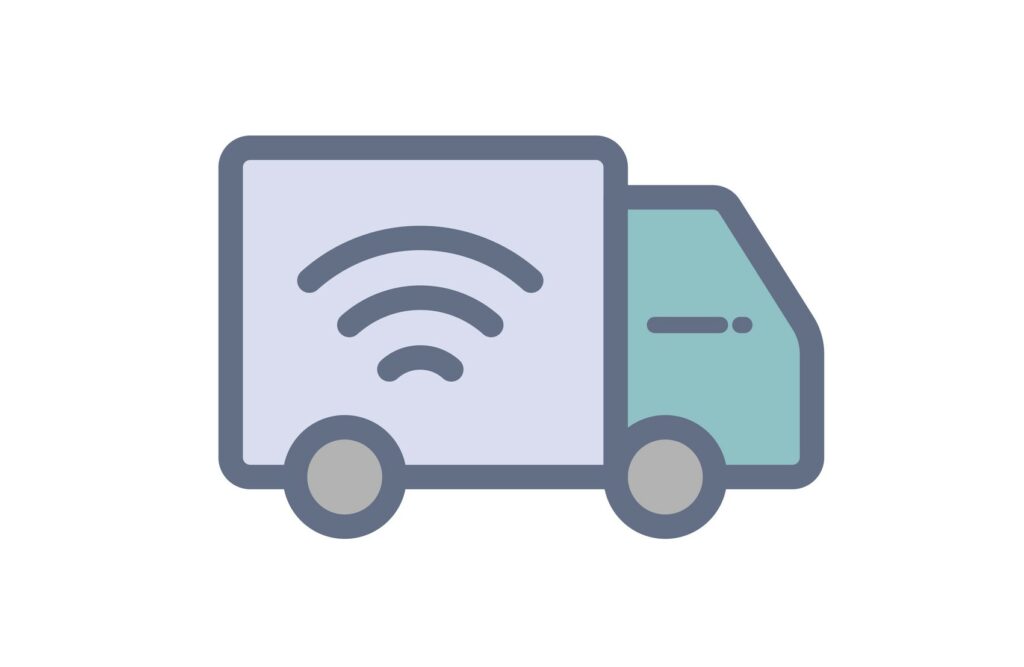Customers trace shipments when they don’t trust carriers
When you’re a columnist, public relations folks send you emails pitching topics to write about. Most are quickly routed to the junk folder.
Lately my inbox is filling up with items about supply chain visibility, and one flak sent me a study that demanded a closer look.
Supply chain visibility is the ability to monitor shipments in transit from origin to destination in real time.
I use it whenever I order a veal sandwich with extra gravy on my SkipTheDishes app. The restaurant can access data from the app to trace the progress of my veal sandwich as it’s ordered, assembled, bagged, handed to a delivery driver, and brought to my door. I get the satisfaction of seeing when my dinner is going to arrive.

The driver? The delivery driver is probably a gig worker—essentially an owner-operator who supplies the car, mobile phone, and gives permission to be tracked. I’m not sure what’s in it for them other than the fact that using the app is their ticket to getting more work.
Something similar may be happening in trucking.
Trucking companies have been tracking equipment for almost 40 years, well before the onset of today’s post-pandemic delivery economy. Satellite and cellular networks have transformed the way we manage trucks, drivers, documents, and customer relations.
I hoped the study that landed in my email would shed some light on how supply chain visibility would help truckers. It may have just reaffirmed some old-school ideas.
Survey says…
The report, from UK-based TiInsight and Project44, centers around a survey asking shippers about their criteria for selecting carriers.
Real-time visibility ranked third, at 15%, ahead of customer service (11%) and geographic coverage (7%).
Incredibly, on-time performance apparently isn’t a priority. Asked about the on-time delivery (OTD) performance of their primary carriers, shippers said the average OTD was 83%. Atrocious! Think about that. Almost one in five shipments is late. In my trucking world anything under 98% is totally unacceptable.
Here’s the kicker: Shippers ranked price (25%) as the top criteria for selecting carriers, closely followed by past on-time performance (21%).
What a shock. Shippers want visibility from carriers, but they want garbage rates even more. They pay for Corvairs but expect Corvettes!
A simple business
Customers don’t trace shipments because they have nothing better to do. In my experience they only check on shipment status when they don’t trust the carrier’s ability to perform as promised. The exception is new customers who feel snake-bitten by the carrier they just toasted.
Let’s look at those survey results again: shippers ranked visibility ahead of the carrier’s network and customer service.
If a shipper chooses a carrier with the right network and great customer service, it shouldn’t need visibility. When the load is 800 miles away there is no correlation between its “real time” location and the 3 p.m. delivery appointment three days in the future.
At its core, trucking is a simple business. You pick up and deliver your customer’s freight on time. When things go awry you call (not email) with empathy and a solution. Trucking companies that give this type of quality service are well on their way to real transparency and supply chain visibility.
Not about tracing
There may come a point when a carrier has no choice but to open itself up to one of the growing number of visibility platforms.
Providing top-notch service is a challenge today. Employee churn and footprint costs have never been higher. One day you’re not going to have enough staff to call your customers about late shipments.
ELD rules are game changers for supply chain visibility because they require nearly every truck on the highway to be connected to a data network. Truckers that share their ELD data with a visibility platform can provide shippers and receivers with real-time ETAs and exception-based alerts they’re really looking for.
Cloud-based TMS platforms provide more than just real-time tracing. They can automate workflows and streamline operations to replace the staff you can no longer find. Technology never gets sick, doesn’t make mistakes, needs no training, and has zero desk costs.
Many truckers told me that younger, larger, and third-party customers are demanding real-time visibility more than ever. In fact, more than 57% of customers stated that it’s a prerequisite for a carrier to haul their freight.
Whether they’re willing to pay for it is another story.
Have your say
This is a moderated forum. Comments will no longer be published unless they are accompanied by a first and last name and a verifiable email address. (Today's Trucking will not publish or share the email address.) Profane language and content deemed to be libelous, racist, or threatening in nature will not be published under any circumstances.